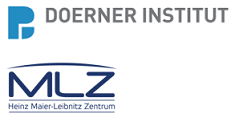Speaker
Description
The SNSF Sinergia project – CORINT encourages partnerships between scientists from different Swiss universities and institutes, working together for elucidating the corrosion phenomena of iron structures in various porous media. Examples of such media are reinforced concrete in buildings, iron cans in bentonite clay for nuclear waste disposal and archaeological artifacts in the ground. The corrosion products developed in such environments can change over time and they are hard to observe with standard analytical techniques. To address this challenge, the Laboratory for Neutron Scattering and Imaging at the Paul Scherrer Institute (PSI-LNS) is developing and optimizing a multimodal quantitative imaging technique based on neutron and X-Ray Computed Tomography (N&X-CT).
The Research Unit in Conservation-Restoration of the Haute Ecole Arc of Neuchâtel (UR-Arc) investigates the corrosion of iron archaeological artifacts (IAA) in the ground. Their central objective is to comprehensively characterize the corrosion state of IAA still buried and to meticulously record any alterations that may occur post-excavation, during conservation and handling stages.
The changes in the composition and volume of the corrosion products can be investigated and quantified in a unique manner using N&X-CT. By comparing the same IAA before and after their exposure to various extreme environments (high relative humidity, fast drying, wet-dry cycles), it is possible to document and precisely quantify the changes in volume, opening of cracks, as well as changes in X-ray / neutron absorption.
A set of real archaeological nails are being used to develop quantitative Multimodal imaging. After acquisition of N&X-CT, the nails are cut in multiple cross-sections and studied with optical microscopy and Raman spectroscopy. Information on the corrosion layers segmentation and phase labeling serves as the ground truth for machine learning. This information on the 2D level is then generalized to the 3D level, i.e., the tomograms. Eventually, this should allow to identify the corrosion products on an unknown sample without the use of invasive techniques.
The sampling and storage protocol will be briefly presented in this poster. The focus will be on the experimental set up and the preliminary results obtained on a first batch of IAA studied.

